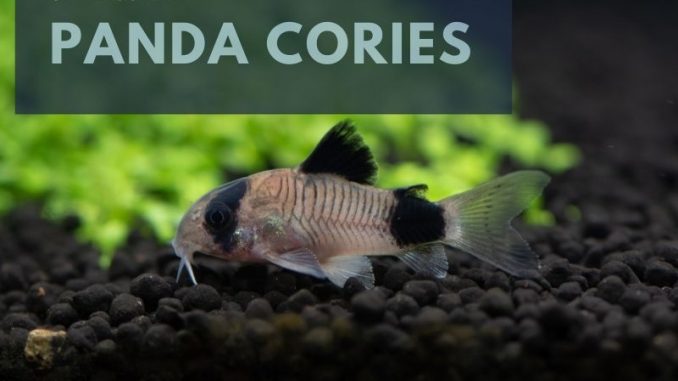
Panda Corydoras, or Cories for short, is one of the more visually appealing catfish. Their off-white and black pattern is reminiscent of a panda, which is how they get their name.
Panda Cories are great freshwater community tank members since they are peaceful and get along well with other community members. They’re extremely sociable and fun to have around.
In this guide, I’ll go over the natural habitat of Panda Cories, and give you tips on how to successfully raise these adorable fish in your community tank.
TABLE OF CONTENTS
Panda Cories Overview
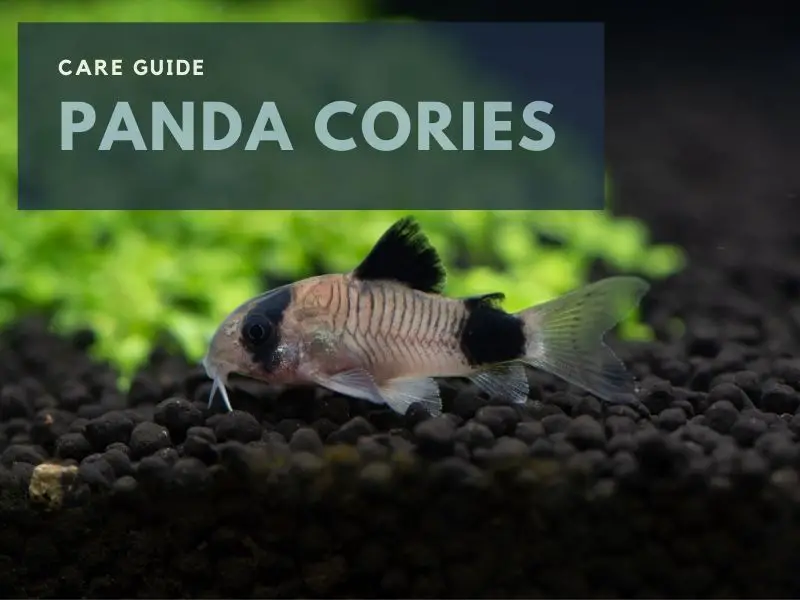
| Category | Rating |
| Care Level: | Very easy |
| Temperament: | Peaceful |
| Color Form: | Various |
| Lifespan: | 10 years |
| Size: | 2 inches |
| Diet: | Omnivore |
| Family: | Callichthyidae |
| Minimum Tank Size: | 10 gallons |
| Tank Set-Up: | Freshwater with plants |
| Compatibility: | Peaceful commnunity |
The Ucayali river system, which is the main headwater of the Amazon River in Peru, is home to the Panda Corydoras.
Not surprisingly, the Panda Cory gets its name from its resemblance to the Great Panda–off-white with black marks around the eyes and body.
The Panda Cory is rare in the wild, but no longer endangered since they are now successfully bred in captivity. Regardless, you’re not likely to see a Panda Corydoras on your next trip to Peru.
The Ucayali river system of Peru is a blackwater system, with soft, slightly acidic water with low mineral content. They are also fast-moving waters with a high oxygen content, so you’ll want to recreate those conditions for your Panda Cories.
In their native habitat, Panda Cories also have heavy plant cover and a soft sand substrate, so they will appreciate these features in your home tank. They will be protected from excess light and predators.
Panda Cories have a lifespan of about 10 years.
Typical Behavior
Panda Cories are nocturnal fish, so they are much more active at night. That is another reason they will appreciate the cover of plants during the brighter time of daylight.
A school of Panda Cories will ensure that the bottom of your aquarium is the heart of the social scene. You’ll have fun watching them scavenge around the floor of the substrate or hanging out with the rest of their school. They really are a lively group of fish to observe.
Every so often, you will see Panda Corydoras swim up to the surface of the water and grab some air.
Appearance
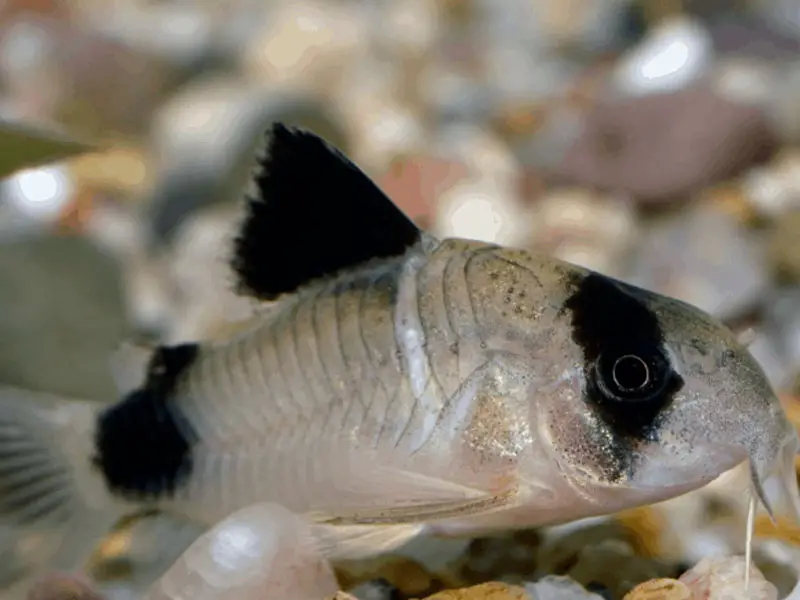
Panda Cories lack scales, and instead have two rows of bony plates that overlap. These plates are called scutes. They also have the catfish barbels (3 sets of 2) and some defensive barbs on their adipose and dorsal fins, and under each eye.
At about 2 inches (5 cm) long, Panda Cories look like your typical catfish but mini-sized. Their bodies are off-white or pinkish, and they have black markings that look very similar to the Giant Panda, so they have black markings around their eyes, dorsal fin, and caudal peduncle at the base of its tail. There is some variation in the size of the black markings.
The Panda Cory typically grows to around two inches long in captivity, although wild specimens may grow a little larger than that.
Habitat and Tank Conditions
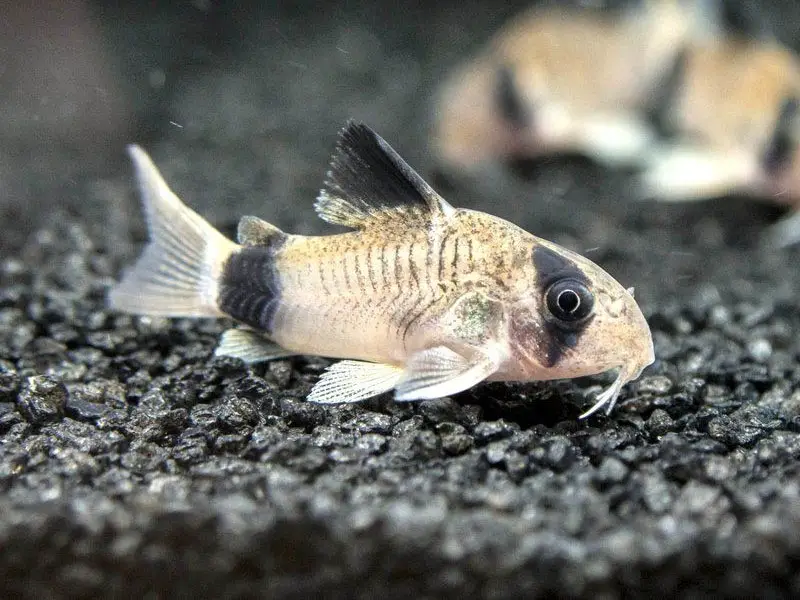
Because they are bottom dwellers, the quality of the substrate is super important. Make sure you have 2 to 3 inches of a sandy substrate or very fine gravel–anything harsher or rougher than that could damage the underbelly and barbells of your Panda Cories. An open wound could get infected, so it’s imperative to offer them a soft substrate that will not scratch or injure them.
Live plants are a must for Panda Cories, which are accustomed to heavy vegetation in the wild. They also need places to hide and take cover, so you should include rocks, caves, driftwood, and even some twisted roots. Make sure to leave enough space between plants so that your Panda Cories have room to swim.
Plants should be trimmed, cleaned, and checked for snails and other unwanted additions that might be trying to hop a ride into your tank on the underside of a leaf.
Pro tip: Whether you are starting a new aquarium community or adding fish or decorations to an existing community, you should always quarantine anyone and anything you put in your tank for at least 14 days.
They are accustomed to moderate to normal lighting, so the plants should block an excess of direct light, but if there is still too much light coming into the tank, you could add some floating plants.
If you’re setting up a new tank rather than acclimating your Panda Cories to an existing community, make sure to rinse the dust off the substrate, clean and sanitize any decorations, and cycle the tank before you add your Panda Cories.
You’ll also need a filter strong enough to provide the kind of current that Panda Cories are accustomed to in the rivers of Peru. You’ll also need a thermometer and heater to regulate and monitor the water conditions.
Water Conditions
Panda Cories are easy to care for as they can tolerate a fairly flexible range of conditions. One thing to remember is that in their natural habitat, the river current produces a regular flow that helps to keep the water clean.
Because that river current does not exist naturally in your home aquarium, you will have to get a filter that will create a strong enough current to mimic their conditions in the wild. Keeping the Panda Corydoras’ tank clean is of utmost importance.
The ideal parameters for Panda Cories are:
- pH levels: 6.0 to 7.0
- Water hardness: 2 to 12 dGH
- Water temperature: 68 to 77° F (20-25°C)
What Size Aquarium Do They Need?
Panda Cories are pretty small, so a 10-gallon (37.8 liters) tank is the minimum, but to keep them content, you’ll need a school of 6, so I’d go with a 20-gallon tank (75.7 liters). If you have a community tank with multiple species, you’ll have to go larger than that.
Tank Mates
Panda Corydoras do great in a community tank with fish of similar temperament and size. They are sociable, calm, and enjoy being around like-minded fish species. They like to hang out along the substrate with Clown Loaches.
Panda Cories also do well with shrimp and other invertebrates; they won’t bother Dwarf Shrimp but may eat Dwarf Shrimp fry.
They should not be kept with aggressive, larger fish who have a tendency to bully them. Tiger Barbs are a good example of a fish to avoid, as they like to nip. They do have pretty good defense barbs, so they should be OK, but why inflict undue stress upon these peaceful catfish?
Suitable tank mates for Panda Cories include:
Keeping Panda Cories Together
Panda Cories are sociable fish and love to hang out with groups of 4 or more Panda Cories!
Diet
Panda Cories are omnivores and scavengers, and like many catfish, spend their days scouring the substrate for uneaten food. Of course, you’ll have to also feed them, and make sure that these bottom feeders don’t get shut out of the food competition by the top and middle feeders.
They need a varied diet that includes both protein and vegetables. They will eat prepared flakes, but enjoy live and frozen meaty proteins like bloodworms, crustaceans, insects, shrimp, and daphnia.
To ensure that they get some food, you can use tongs to place food on the substrate or drop in sinking pellets or tablets. Feed them right before you go to sleep since they are nocturnal and more active at night.
Don’t overfeed Panda Cories–only give them as much as they can eat in a few minutes.
Care
As with most freshwater fish, keeping a clean tank is one of the best things you can do to care for your fish–a clean and well-regulated aquarium reduces stress and maintains immunity, ensuring the quality of life and preventing disease.
Panda Cories need clean, oxygen-rich water. Make sure you have a decent filter and vacuum the substrate weekly with an aquarium vacuum.
Perform 25% partial water changes every other week, and test ammonia, nitrite, and nitrate levels. Clean filter cartridges regularly.
Panda Cories are at risk for parasitic infections such as ich and flukes (gill and skin), bacterial infections, and fungal infections. If your Panda Corydora has physical symptoms such as spots, ulcers, fin damage, or swelling, or behavioral signs, such as extreme itching, lethargy, or loss of appetite, chances are good that your Panda Cory is afflicted and should be quarantined and treated.
Breeding
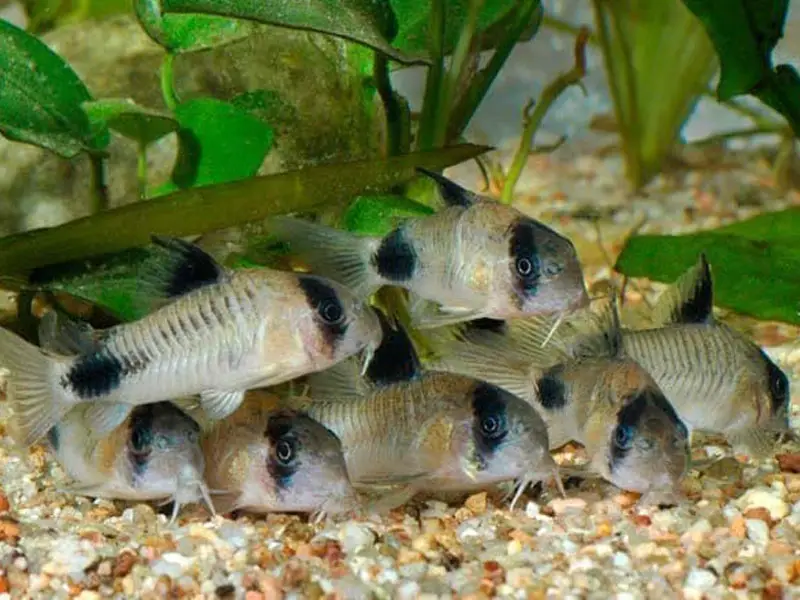
Breeding Panda Cories in captivity is more acceptable as of late. These egg layers do have a tendency to eat their eggs, so you’ll need a separate breeding tank and you’ll have to remove the parents as soon as you see eggs deposited.
The breeding tank should be lined with a spawning mop or mossy plants where the eggs can be deposited. Before beginning the process, you should feed the adult Panda Cories a good diet of live proteins (brine shrimp, daphnia, or bloodworms are all good choices).
You can trigger spawning by making the water a little cooler with a partial water change–this recreates the rainy season breeding conditions in the wild.
The female Panda Cory will accept male advances when she is full of eggs, cupping her pelvic fins together and releasing one or two eggs to be fertilized. Then she will look for a place to hide the sticky egg (that’s why you need those mossy plants.)
In total, she will lay up to 100 sticky, yellowish eggs over the course of several hours. The eggs take about 4 days to hatch. Check the water temperature regularly, as the fry is sensitive to temperatures. Make sure the temperature stays at 72°F (22.2°C) or lower.
You can feed the fry infusoria or in a pinch, you can use prepared fry food. In about 3 months, Panda Cories will reach full coloration. But don’t let that fool you into thinking that they are completely mature. They do not reach sexual maturity until they are a year old, so you should not attempt to breed them before that point.
Are Panda Cories Suitable for your Aquarium?
Panda Cories are adorable, active and fun to watch, and easy to care for. Appropriate for beginning hobbyists, they are also appealing to more experienced aquarists.
As peaceful and sociable tankmates, these South American fish are great community members that are sure to be a positive addition to your freshwater community.
If you have space, treat yourself to a school of Panda Cories.
Are you a fan of Panda Corydoras? Tell me why in the comments below, and thanks for visiting the page!

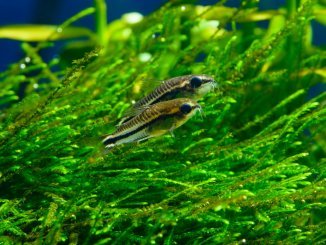
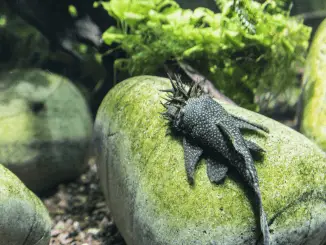
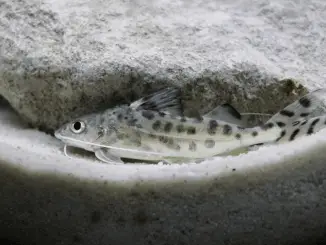
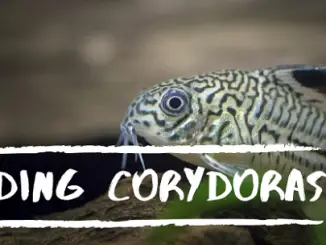
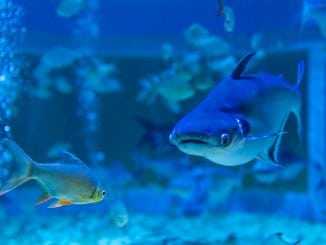
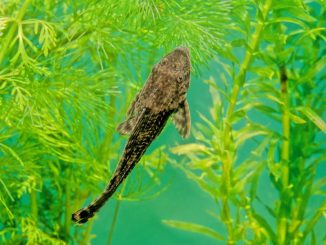
Hey! I noticed you mixed up the conversion for gallons to liters, 20 gallons are about 75L, rather than 7!
Great catch, thank you! I’ve just updated the content, so the conversions should be accurate now.
That would be short US gallons then?
thanks very helpfull, my males swim about togethr a lot my femails tend to stick together in twos and threes but swim less is this normal ?